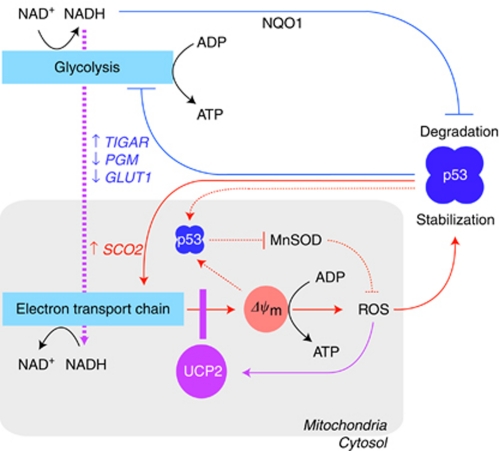Figure 3.
UCP2 and feedback regulation of p53. The tumour suppressor p53 controls metabolic pathways through multiple mechanisms. Transcriptional activation of SCO2 augments the capacity of mitochondrial electron transport, which is a major source of ROS (solid red lines). In addition, a fraction of p53 translocates to the mitochondrial matrix and directly inhibits MnSOD, further increasing ROS (dotted red lines). Metabolic stress resulting from these events promotes p53 stabilisation. Thus, pro-oxidant effects of p53 are regulated by multiple feed-forward amplification loops. The UCP2 is also activated by ROS (solid purple line) and may block these p53 responses by modulating the mitochondrial membrane potential (Δψm) and breaking ROS-mediated p53 activation as well as interfering with p53 translocation to the matrix. In a negative regulatory loop, differential targeting of TIGAR, PGM and GLUT1 genes by p53 may diminish glycolytic flux and NADH-mediated binding to NQO1, which would otherwise protect p53 from ubiquitin-independent degradation (solid blue lines). Because of higher mitochondrial respiratory rates, UCP2 may increase NADH shuttling to the mitochondria (dotted purple line), attenuate NQO1 activity and promote p53 degradation. The colour reproduction of this figure is available at the British Journal of Cancer online.

